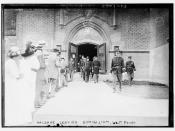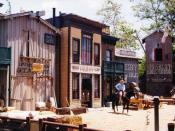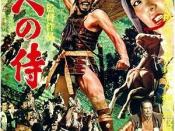By 1960, the production of Westerns in Hollywood had entered a decline from which it never recovered. Although for a time in the mid sixties the supply was augmented from an unexpected source, as the Italians found new ways to inject life into a dying genre. This was witnessed in the "spaghetti" westerns of Sergio Leone such as The Good, The Bad, and The Ugly(1968), but this proved to be a short lived phenomenon, and by the seventies, Hollywood was struggling to produce a bare score of westerns per year. In the eighties, with production declining still, the death of the genre was produced on all sides. By the nineties, the western girded itself for one last stand, witnessed in the frontier western of Dances With Wolves(1991) and the revenge western Unforgiven(1995), which director Clint Eastwood attempted by sheer effort to get the genre back on its feet. However the predicted full scale revival failed to materialise.
We can speculate on the reasons for this decline. Edward Buscombe, who has written profusely on the western, believes the decline of the studio system resulted in the decline of the staple Western form, the B film, during the 1950s. More recently he goes on to say, the change in production patterns means now catering for the changing demographics of the cinema audience, the majority of whom are now too young for a genre that always venerated age. The younger audience is attracted to other genres- horror, science fiction- that offer many traditional satisfactions of the western without the dated historical baggage that now seems increasingly irrelevant in the 21st century. The changing attitudes of society, especially in terms of sexuality and ethnic difference, have left the classic Western marooned in its nineteenth century values.
The death of the Western genre mirrors the...


